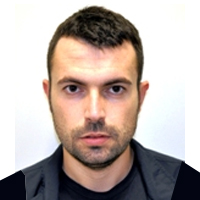Drug treatment and rehabilitation in China: Theoretical rationales and current situations
Published on: 18th February, 2021
OCLC Number/Unique Identifier: 8946740322
Global drug use has reached epidemic levels, with approximately 269 million drug users worldwide [1]. Problematic drug use may lead to serious physical, social, and mental health problems. An estimated 167,000 deaths attributed to drug-related disorders worldwide in 2017 [2]. The rising global drug use and its severe adverse consequences make the drug treatment/rehabilitation a top priority for policymakers. In modern China, illicit drug use has raised great concern from both the academia and the public. Nearly 2.15 million Chinese were registered as drug users in 2019 [28]. Drug-related crimes and deaths are also increasing [29]. The current drug treatment programs in China are mainly compulsory, addressing coercion and discipline. However, the effectiveness was found to be low [3]. Situated in the fields of social work, public health, and psychology, Chinese scholars and practitioners have conducted some empirical tests for these drug treatment/rehabilitation programs and already found several effective preventive factors in the programs. However, the existing research on the design and evaluation of Chinese drug treatment/rehabilitation programs rarely investigate the theoretical rationales behind these programs. This study would address three criminological theories that have been applied to explain drug treatment and rehabilitation in Western societies: Differential Association Theory, Social Bonding Theory, and Labeling Theory. Similar theoretical rationales could be learnt and adopted by Chinese programs.
A Three approach at one stage to surgical management of Cervical Spondyloptosis after Failed Primary anterior fusion
Published on: 31st December, 2018
OCLC Number/Unique Identifier: 7970377562
A 35-year-old female, known case of complete spinal cord injury, presented with cervical pain and neck deformity that interfere with her physiotherapy and occupational therapy. Two years before admission, she had a car accident which result in a complete quadriplegia. That time at another center, she underwent surgery to anterior cervical fixation of C6-C7 through insertion of cage and plate without corpectomy. Based on current radiologic images, spondyloptosis was detected at the C6-C7 with bilateral locked facet, due to hardware failure. A three approaches in one stage was performed to maintain cervical alignment that includes posterior, anterior and again posterior approach. With this manner, anterior fusion through corpectomy and insertion of expandable cage and plate as same as instrumental posterolateral fusion were done. After surgery, she was pain free and the alignment of cervical spine was maintained so she could come back to ordinary rehabilitation programs.
Postpartum as the best time for physical recovery and health care
Published on: 2nd January, 2023
Aim: The current paper presents a subjective symptom survey regarding postpartum discomfort (Study 1) and a case study on postpartum care using the program developed based on the survey results (Study 2). Thereafter, health care during the postpartum period is discussed.Methods: Study 1 analyzed 1638 postpartum women who completed the Subjective Fatigue Symptom Scale (SFSS) over the period from June 2012 to December 2019. Study 2 detailed the case of a 33-year-old primiparous woman who answered questions regarding the rehabilitation care program.Results: The 1638 subjects included in Study 1 had a mean age of 32.4 ± 8.2 years and a mean postpartum duration of 4.3 ± 2.3 months. Subjective symptoms included lower back pain, shoulder stiffness, sleepiness, wanting to lie down, yawing, and eye strain. The case included in Study 2 showed certain psychological and physical changes following the exercise program. The results of Study 1 showed that motor system discomfort, such as stiff shoulders and lower back pain, occurred in women across all postpartum stages. Our results demonstrated that care and exercise geared toward improving motor system function are imperative after childbirth. Meanwhile, the results of Study 2 imply that our rehabilitation program based on postpartum physical conditions had positive psychological and physical effects.Conclusion: Taken together, our results suggest that continuing rehabilitative care based on the physical condition during each postpartum stage facilitates improvement in mothers’ physical and psychological discomfort.




